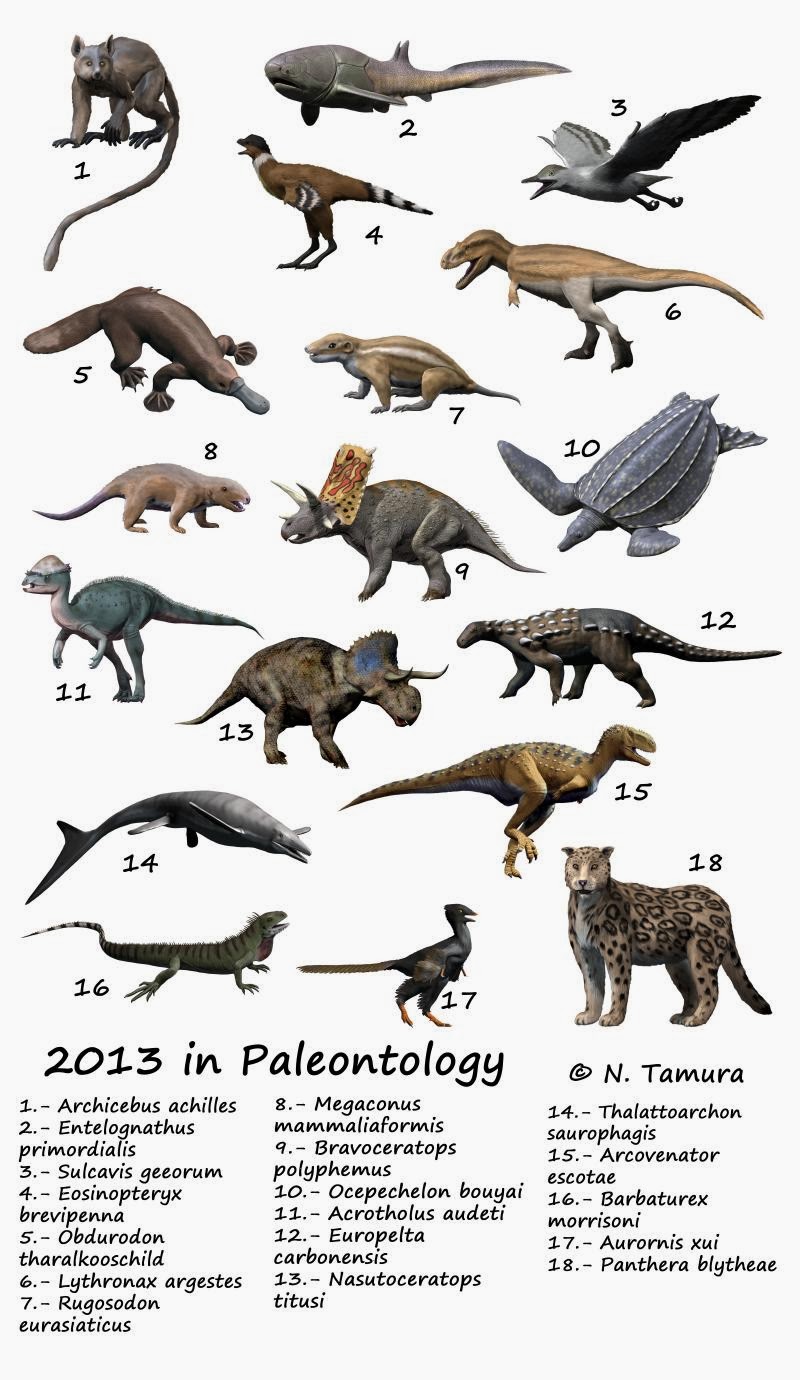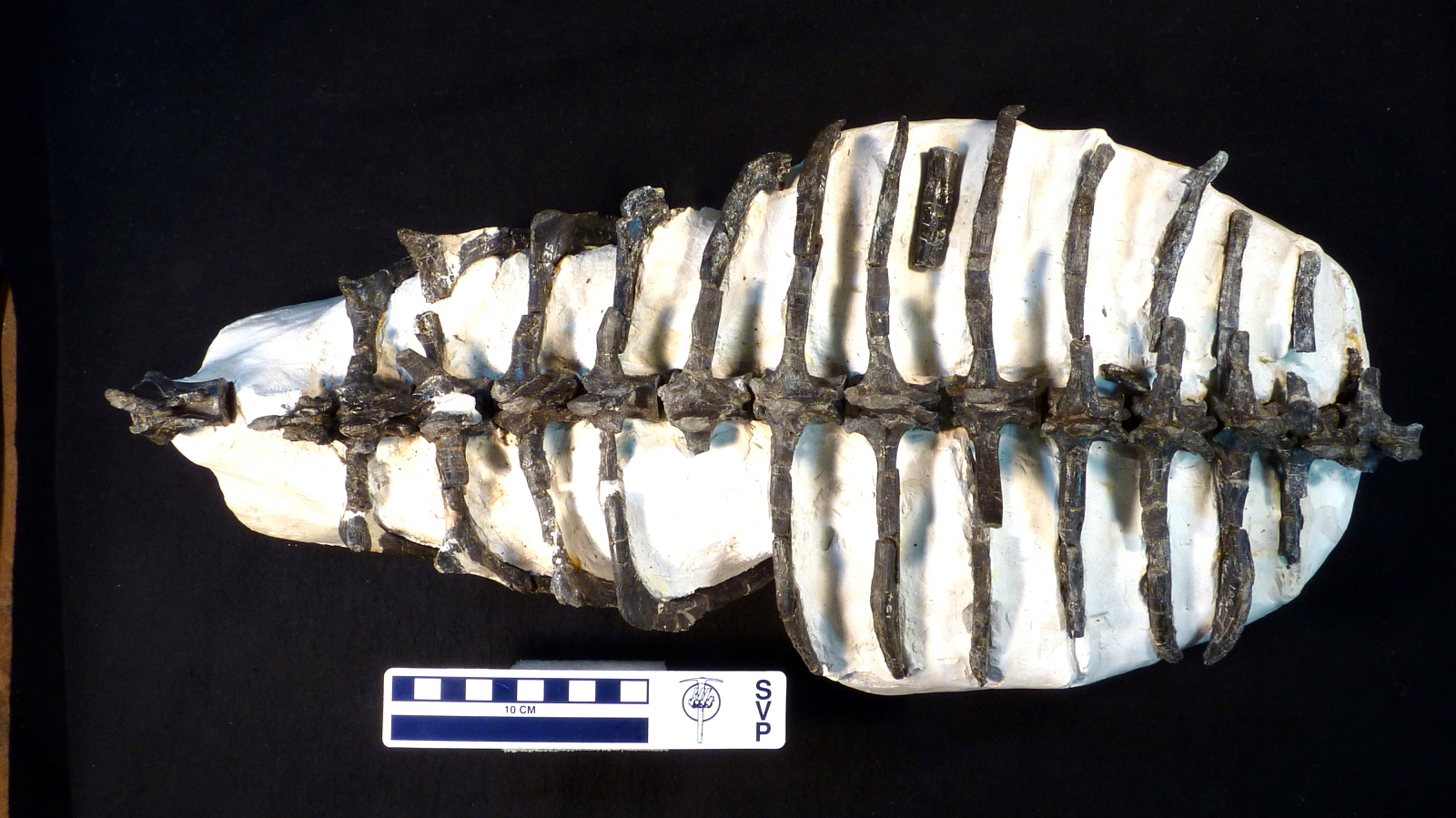|
Jaxtasuchus
''Jaxtasuchus'' is an extinct genus of armored doswelliid archosauriform reptile known from the Middle Triassic (Ladinian stage) of the Erfurt Formation in Germany. The type species, ''Jaxtasuchus salomoni'', was named in 2013 on the basis of several incomplete skeletons and other isolated remains. Like other doswelliids, members of the genus were heavily armored, with four longitudinal rows of bony plates called osteoderms covering the body. ''Jaxtasuchus'' is the first doswelliid known from Europe and is most closely related to ''Doswellia'' from the Late Triassic of the eastern United States. However, it was not as specialized as ''Doswellia'', retaining several generalized archosauriform characteristics and having less armor. ''Jaxtasuchus'' fossils have been found in aquatic mudstones alongside fossils of temnospondyl amphibians, crustaceans, and mollusks, suggesting that ''Jaxtasuchus'' was semiaquatic like modern crocodilians. Discovery Fossils of ''Jaxtasuchus'' have ... [...More Info...] [...Related Items...] OR: [Wikipedia] [Google] [Baidu] |
Doswelliid
Doswelliidae is an extinct family of carnivorous archosauriform reptiles that lived in North America and Europe during the Middle to Late Triassic period. Long represented solely by the heavily-armored reptile ''Doswellia'', the family's composition has expanded since 2011, although two supposed South American doswelliids (''Archeopelta'' and ''Tarjadia'') were later redescribed as erpetosuchids. Doswelliids were not true archosaurs, but they were close relatives and some studies have considered them among the most derived non-archosaurian archosauriforms. They may have also been related to the Proterochampsidae, a South American family of crocodile-like archosauriforms. Description Doswelliids are believed to be semiaquatic carnivores similar to crocodilians in appearance, as evidenced by their short legs and eyes and nostrils which are set high on the head, though the putative member ''Scleromochlus'' has been interpreted as a frog-like hopper by one study. They had long bodi ... [...More Info...] [...Related Items...] OR: [Wikipedia] [Google] [Baidu] |
Erfurt Formation
The Erfurt Formation, also known as the Lower Keuper (German: ''Untere Keuper'', ''Lettenkeuper'', ''Lettenkohle'' or ''Lettenkohlenkeuper''), is a stratigraphic formation of the Keuper group and the Germanic Trias supergroup. It was deposited during the Ladinian stage of the Triassic period.Erfurt Formation at .org It lies above the and below the . [...More Info...] [...Related Items...] OR: [Wikipedia] [Google] [Baidu] |
2013 In Paleontology
Plants Cnidarians Arthropods Bryozoans Brachiopods Molluscs Echinoderms Conodonts Fishes Amphibians Research * Laloy ''et al.'' (2013) reinterpret the Eocene frog species ''Rana cadurcorum'' from the Quercy Phosphorites (France) as a junior synonym of '' Thaumastosaurus gezei''. Newly named temnospondyls Newly named lepospondyls Newly named lissamphibians Turtles Research * A study on the anatomy of the brain and inner ear of the Jurassic turtle ''Plesiochelys etalloni'' is published by Paulina Carabajal ''et al.'' (2013). Newly named turtles Thalattosaurs Ichthyopterygians Lepidosauromorphs Newly named sauropterygians Newly named rhynchocephalians Newly named lizards Newly named snakes Archosauromorphs Newly named basal archosauromorphs Archosaurs Other reptiles Synapsids Non-mammalian synapsids Research * The postcranial skeleton of therocephalian '' Ictidosuchoides'' is described by Heidi Fourie (2013). New taxa ... [...More Info...] [...Related Items...] OR: [Wikipedia] [Google] [Baidu] |
Doswellia
''Doswellia'' is an extinct genus of archosauriform from the Late Triassic of North America. It is the most notable member of the family Doswelliidae, related to the proterochampsids. ''Doswellia'' was a low and heavily built carnivore which lived during the Carnian stage of the Late Triassic. It possesses many unusual features including a wide, flattened head with narrow jaws and a box-like rib cage surrounded by many rows of bony plates. The type species ''Doswellia kaltenbachi'' was named in 1980 from fossils found within the Vinita member of the Doswell Formation (formerly known as the Falling Creek Formation) in Virginia. The formation, which is found in the Taylorsville Basin, is part of the larger Newark Supergroup. ''Doswellia'' is named after Doswell, the town from which much of the taxon's remains have been found. A second species, ''D. sixmilensis,'' was described in 2012 from the Bluewater Creek Formation of the Chinle Group in New Mexico; however, this species was sub ... [...More Info...] [...Related Items...] OR: [Wikipedia] [Google] [Baidu] |
Ladinian
The Ladinian is a stage and age in the Middle Triassic series or epoch. It spans the time between Ma and ~237 Ma (million years ago). The Ladinian was preceded by the Anisian and succeeded by the Carnian (part of the Upper or Late Triassic). The Ladinian is coeval with the Falangian regional stage used in China. Stratigraphic definitions The Ladinian was established by Austrian geologist Alexander Bittner in 1892. Its name comes from the Ladin people that live in the Italian Alps (in the Dolomites, then part of Austria-Hungary). The base of the Ladinian Stage is defined as the place in the stratigraphic record where the ammonite species '' Eoprotrachyceras curionii'' first appears or the first appearance of the conodont ''Budurovignathus praehungaricus''. The global reference profile for the base (the GSSP) is at an outcrop in the river bed of the Caffaro river at Bagolino, in the province of Brescia, northern Italy.The GSSP was established by Brack ''et al.'' (2005) The t ... [...More Info...] [...Related Items...] OR: [Wikipedia] [Google] [Baidu] |
Zanclodon Laevis
''Zanclodon'' ("scythe tooth") is an extinct genus of archosauriform found in Middle Triassic deposits in southern Germany. Taxonomy ''Zanclodon'' was originally named ''Smilodon'' by Plieninger (1846), but this name had previously been used for the saber-toothed cat (a preoccupied name), prompting Plieninger to erect the replacement name ''Zanclodon''. It was formerly placed in the Teratosauridae, within the Theropoda, and at times, plateosaurid material was mistakenly referred to ''Zanclodon'' (see Galton 2001). The type species, ''Zanclodon laevis'', is based on a left maxilla that represents an indeterminate archosaurian. Therefore, the genus is not unambiguously identifiable.Galton, P.M. (2001). The prosauropod dinosaur ''Plateosaurus'' Meyer, 1837 (Saurischia: Sauropodomorpha; Upper Triassic). II. Notes on the referred species. ''Revue de Paléobiologie'', Genève 20(2): 435–502. Species * ''Z. laevis'' (Plieninger, 1846) riginally "Smilodon"( type) * ''Z. crenatu ... [...More Info...] [...Related Items...] OR: [Wikipedia] [Google] [Baidu] |
Batrachotomus Kupferzellensis
''Batrachotomus'' is a genus of prehistoric archosaur. Fossils of this animal have been found in southern Germany and dated from the Ladinian stage of the Middle Triassic period, around 242 to 237 million years ago. ''Batrachotomus'' was described by palaeontologist David J. Gower 22 years after its discovery. The locality where ''Batrachotomus'' lived was a swampy region and the name comes from the Greek ''batrachos/βάτραχος'' (frog) and ''tome/τομή'' (cutting, slicing), which refers to its preying on the large amphibian ''Mastodonsaurus''.Gower (1999), p. 6. In contrast with sprawling reptiles, like crocodiles, this large carnivore was very agile with locomotor superiority due to its erect stance. A remarkable feature seen on its back was a row of paired, flattened bony plates. ''Batrachotomus'' was possibly an early relative of ''Postosuchus'',Gower (1999), p. 1. which lived during the dawn of the dinosaurs. Description ''Batrachotomus'' was a heavily built, ... [...More Info...] [...Related Items...] OR: [Wikipedia] [Google] [Baidu] |
Pseudosuchian
Pseudosuchia is one of two major divisions of Archosauria, including living crocodilians and all archosaurs more closely related to crocodilians than to birds. Pseudosuchians are also informally known as "crocodilian-line archosaurs". Prior to 2011, the clade Pseudosuchia was often called Crurotarsi in reference to the crurotarsal ankle found in almost all members of the group, which traditionally included phytosaurs, ornithosuchids, and suchians. However, a major 2011 study of Triassic archosaur relations proposed that phytosaurs were not closely related to other traditional "crurotarsans", at least compared to "bird-line archosaurs" (Avemetatarsalians) such as pterosaurs and dinosaurs. As a result, the possession of a crurotarsal ankle was considered a plesiomorphic ("primitive") feature retained by pseudosuchians. Crurotarsi now refers to a broader group of reptiles including Pseudosuchia, Phytosauria, and Avemetatarsalia. Despite Pseudosuchia meaning "false crocodiles", the n ... [...More Info...] [...Related Items...] OR: [Wikipedia] [Google] [Baidu] |
Vellberg
Vellberg is a town in the district of Schwäbisch Hall, in Baden-Württemberg, Germany. It is located 10 km east of Schwäbisch Hall, and 15 km southwest of Crailsheim Crailsheim is a town in the German state of Baden-Württemberg. Incorporated in 1338, it lies east of Schwäbisch Hall and southwest of Ansbach in the Schwäbisch Hall district. The city's main attractions include two Evangelical churches, a .... Gallery File:Stöckenburg 271105.jpg, Vellberg's church St. Martin is commonly known as "Stöckenburg" File:Vellberg 260807.jpg, Burg Vellberg (''Unteres Schloss'', which means Lower Castle) References Schwäbisch Hall (district) {{SchwäbischHall-geo-stub ... [...More Info...] [...Related Items...] OR: [Wikipedia] [Google] [Baidu] |
Wolpertshausen
Wolpertshausen is a municipality in the district of Schwäbisch Hall in Baden-Württemberg in Germany Germany,, officially the Federal Republic of Germany, is a country in Central Europe. It is the second most populous country in Europe after Russia, and the most populous member state of the European Union. Germany is situated betwe .... References Schwäbisch Hall (district) {{SchwäbischHall-geo-stub ... [...More Info...] [...Related Items...] OR: [Wikipedia] [Google] [Baidu] |
Kupferzell
Kupferzell is a small German town in the district of Hohenlohe in Baden-Württemberg, Germany named after the Kupfer river flowing through it. The largest neighbouring towns are Künzelsau (to the north) and Schwäbisch Hall (to the south). History Kupferzell was first mentioned in 1236 and as early as the 14th century, the Count of Hohenlohe owned property there. During the late Middle Ages, Kupferzell always was referred to as "Celle", with a closer localization of "uf dem Ornwaldt". It was only in the 15th century that the current name appeared after its location on the Kupfer (river). From 1721 to 1727/1729, Count Philipp Ernst had a castle built here. From 1767 until 1884 Kupferzell was the residence of the duke of Hohenlohe-Waldenburg-Schillingsfürst; after mediatization in 1806, Kupferzell became part of the Königreich Württemberg under administration of the High Office of Öhringen. On January 1, 1972, Kupferzell fused with Eschental, Feßbach, Mangoldsall, Goggen ... [...More Info...] [...Related Items...] OR: [Wikipedia] [Google] [Baidu] |
Temnospondyl
Temnospondyli (from Greek language, Greek τέμνειν, ''temnein'' 'to cut' and σπόνδυλος, ''spondylos'' 'vertebra') is a diverse order (biology), order of small to giant tetrapods—often considered Labyrinthodontia, primitive amphibians—that flourished worldwide during the Carboniferous, Permian, and Triassic periods. A few species continued into the Jurassic and Cretaceous periods. Fossils have been found on every continent. During about 210 million years of evolutionary history, they adapted to a wide range of habitats, including freshwater, terrestrial, and even coastal marine environments. Their life history is well understood, with fossils known from the larval stage, metamorphosis, and maturity. Most temnospondyls were semiaquatic, although some were almost fully terrestrial, returning to the water only to breed. These temnospondyls were some of the first vertebrates fully adapted to life on land. Although temnospondyls are considered amphibians, many had cha ... [...More Info...] [...Related Items...] OR: [Wikipedia] [Google] [Baidu] |




